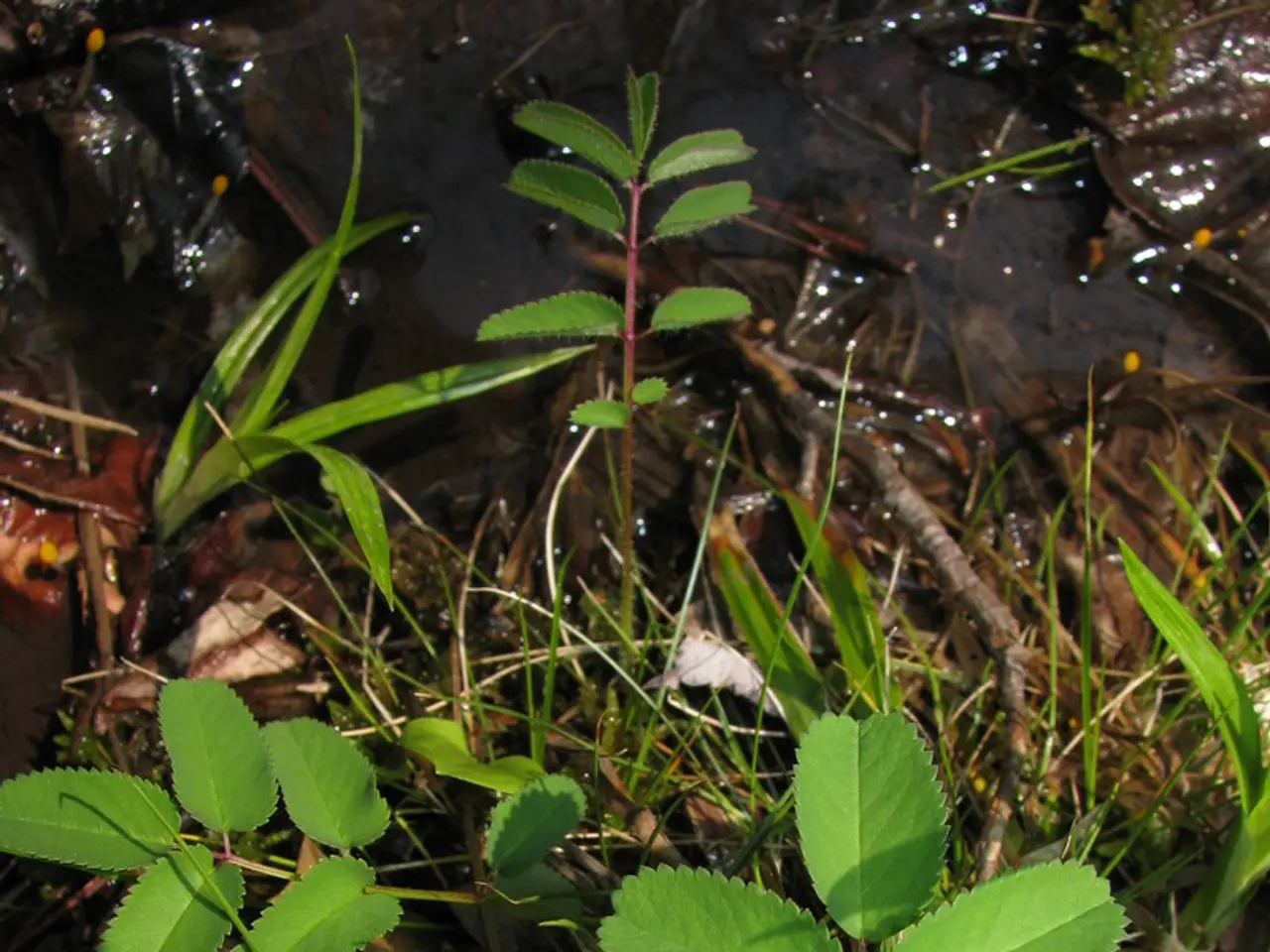Landscaping Fabric: Weighing Its Benefits and Drawbacks for Weed Suppression
In many gardens across the globe, landscaping fabric has become a popular choice for weed control and soil management. This permeable material, made from tightly woven plastic fibers with perforated holes, allows for ideal soil moisture and temperature retention while eliminating weeds and promoting plant growth [1].
One of the key advantages of landscaping fabric is its ability to prevent soil erosion. By holding the soil in place and allowing moisture and air to penetrate, it helps to stabilise the soil, particularly on slopes or under mulch and gravel layers [1]. Additionally, it conserves soil moisture by reducing evaporation, supporting plant hydration [1][5].
However, it's essential to consider that the ideal landscaping fabric for your garden depends on various factors. For instance, using the wrong type of fabric may affect plant growth [6].
Landscaping fabric inhibits the breakdown of garden matter, which can impact the feeding of plants over time. It also limits soil exposure to air, sunlight, and rain, reducing healthy microbial activity critical for nutrient breakdown and soil fertility [1][5]. This can lead to soil compaction over time, stressing plants due to diminished nutrient availability and root growth [1][2].
Despite these potential drawbacks, landscaping fabric offers several benefits for weed control. It effectively reduces weed growth by blocking sunlight, particularly annual weeds [1][4]. By doing so, it helps retain moisture and stabilise the soil, benefiting plant health.
However, it's important to note that weeds may still grow in accumulated soil or organic debris on top of the fabric, and strong perennial weeds can grow through or around it [4]. Furthermore, it can be challenging to amend soil or change plantings beneath the fabric, making it less suitable for vegetable or annual flower gardens that require frequent soil cultivation [2][3].
Installation near trees or on steep slopes can also pose challenges, as roots can damage or displace the fabric [3].
In summary, landscaping fabric works best in stable, permanent garden areas for initial weed suppression and moisture control. However, its long-term use can negatively impact soil health and plant growth. Alternative organic mulches or ground covers may be preferable where ongoing soil amendment and biological activity are desired [1][3][5].
Moreover, landscaping fabric can protect the soil from harsh weather conditions and control water flows. It's also a more affordable option than regularly applying herbicides. Professional installation is recommended to ensure optimal results. The soil warms up more quickly when landscaping fabric is installed, and it can control weed growth for days, months, or years [7].
In the case of persistent weeds that spread all over the garden, landscape fabric can be an effective solution. However, gardeners should be aware of its potential impact on soil health and plant growth and consider alternative methods where appropriate.
References: [1] University of California Agriculture and Natural Resources. (n.d.). Landscape Fabric. Retrieved from https://ucanr.edu/sites/UCBGardenWeb/files/280311.pdf [2] Fine Gardening. (2019). Landscaping Fabric: Pros, Cons, and Alternatives. Retrieved from https://www.finegardening.com/landscaping-fabric-pros-cons-and-alternatives [3] The Spruce. (2020). Landscaping Fabric: Pros, Cons, and Alternatives. Retrieved from https://www.thespruce.com/landscaping-fabric-pros-cons-and-alternatives-1402708 [4] Gardening Know How. (2021). Landscape Fabric: Pros, Cons, and Alternatives. Retrieved from https://www.gardeningknowhow.com/garden-how-to/soil-fertilizers/landscape-fabric-pros-cons-and-alternatives.htm [5] Cornell University Cooperative Extension. (n.d.). Landscape Fabric. Retrieved from https://blogs.cornell.edu/extensionhorticulture/2014/03/25/landscape-fabric/ [6] The Old Farmer's Almanac. (2020). Landscape Fabric: Pros, Cons, and Alternatives. Retrieved from https://www.almanac.com/gardening/landscape-fabric-pros-cons-and-alternatives [7] Gardenerdy. (n.d.). Landscape Fabric: Pros, Cons, and Alternatives. Retrieved from https://gardenerdy.com/landscape-fabric-pros-cons-and-alternatives/
Landscaping fabric may promote a desirable 'lifestyle' for gardeners seeking effective weed control and soil management in their 'home-and-garden'. By offering benefits such as soil erosion prevention, moisture conservation, and initial weed suppression, it can contribute to a well-maintained 'gardening' environment.
However, long-term use of landscaping fabric may potentially negatively impact soil health and plant growth, which could be incongruous with the desired 'lifestyle' and 'gardening' practices that prioritize soil fertility and nutrient availability for plants.




